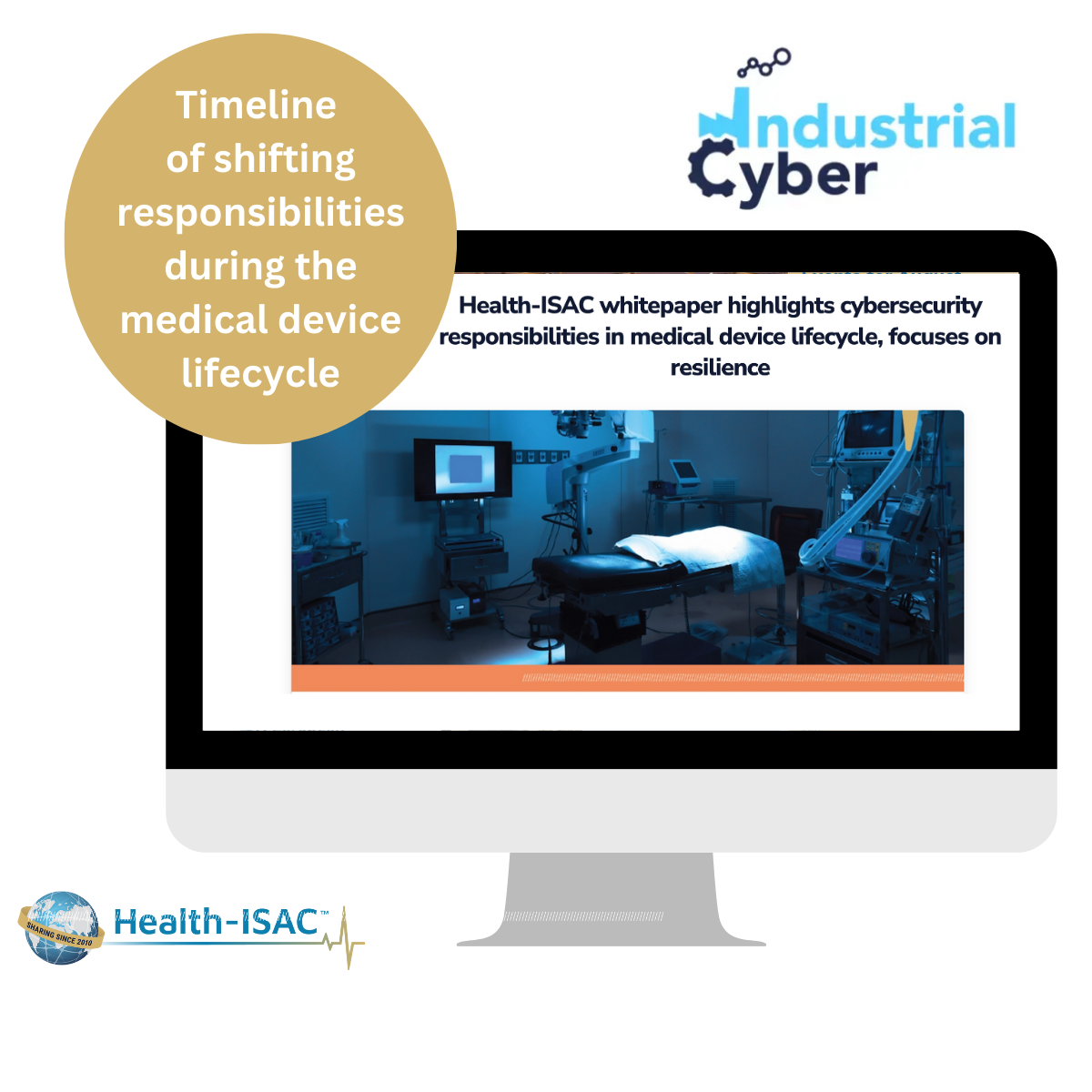Health-ISAC whitepaper highlights cybersecurity responsibilities in medical device lifecycle, focuses on resilience

Health-ISAC published a whitepaper addressing the tasks needed to maintain the cyber resilience of medical devices and how the responsibilities may shift from party to party throughout the total product. As medical devices move through the lifecycle phases, the responsibility for tasks may transfer between the manufacturers and the customer. The Health-ISAC whitepaper identifies that communication between the two parties is essential as the device moves through the lifecycle so that tasks are coordinated, and security gaps within the product are reduced.
Titled ‘Exploring the Cybersecurity Roles of Manufacturers and Healthcare Organizations During the Medical Device Lifecycle,’ the white paper identified that medical devices go through four lifecycle phases, with varying levels of responsibilities placed on the medical device manufacturer and the healthcare delivery organization. Healthcare delivery organizations (HDOs) should perform more regular risk assessments going into end of life (EOL) and end of support (EOS) to determine if they can accept the risk of continued use. It also points out that the responsibility for maintaining a medical device’s cybersecurity posture evolves throughout the lifecycle of a device.
Read the full article in Industrial Cyber. Click Here
- Related Resources & News
- New Healthcare Security Benchmark Highlights Key Investment Priorities and Risks
- Are Efforts to Help Secure Rural Hospitals Doing Any Good?
- CISA cuts $10 million annually from ISAC funding for states amid wider cyber cuts
- 2024 Health-ISAC Discussion Based Exercise Series After-Action Report
- Cobalt Strike takedown effort cuts cracked versions by 80%
- Denise Anderson recognized on Cyber25 Women of Impact list
- The ISAC Advantage for Collective Threat Intelligence
- How Hackers Using AI Tools Threaten the Health Sector
- Health-ISAC Hacking Healthcare 3-4-2025
- 2025 Newsletter – March
